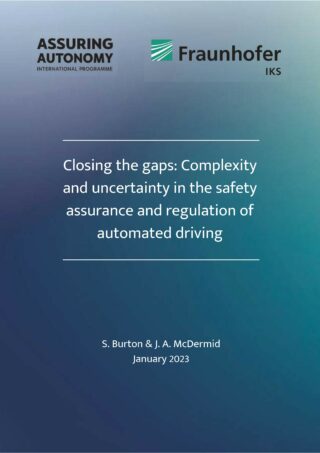Read next
White paper
New approach to managing the safety of automated driving systems
Two leading experts from the Fraunhofer IKS and the University of York in the safety of complex systems have published a paper proposing a new approach to assure the safety of cognitive cyber-physical systems (CPS), including automated driving systems.



© iStock/hanohiki
Professor Dr Simon Burton, Scientific Director for Safety at the Fraunhofer Institute for Cognitive Systems IKS, and Professor John McDermid, Director of the Assuring Autonomy International Programme at the University of York published the white paper “Closing the gaps: complexity and uncertainty in the safety assurance and regulation of automated driving” earlier this month.

White paper "Closing the gaps: Complexity and uncertainty in the safety assurance and regulation of automated driving"
The work builds on the authors’ earlier research for the Royal Academy of Engineering on the safety of complex systems. It looks at how we can understand and manage the growing complexity of CPS and uncertainties in their behaviour, to help us assure their safety.
“We approached this work recognising that technical measures alone are not enough to help us understand the complexity of CPS such as automated driving systems,” said Professor Dr Burton. “We defined three different perspectives - technical and human factors, management and operations, and governance and regulation - to provide a framework for ongoing assurance of the safety of CPS.”
The authors offer an approach to managing the safety of CPS and regulating their deployment and operation, in order to maintain an acceptable level of residual risk, despite - and with the intent of reducing - any remaining uncertainty.
“This work offers a novel and insightful approach to how we can assure the safety of complex automated driving systems,” said Professor McDermid. “The models we’ve developed can be used to guide decisions about the deployment and safety assurance of such systems. They have also helped us to identify additional areas of research that need to be undertaken in safety assurance and the development of regulations and standards.”



